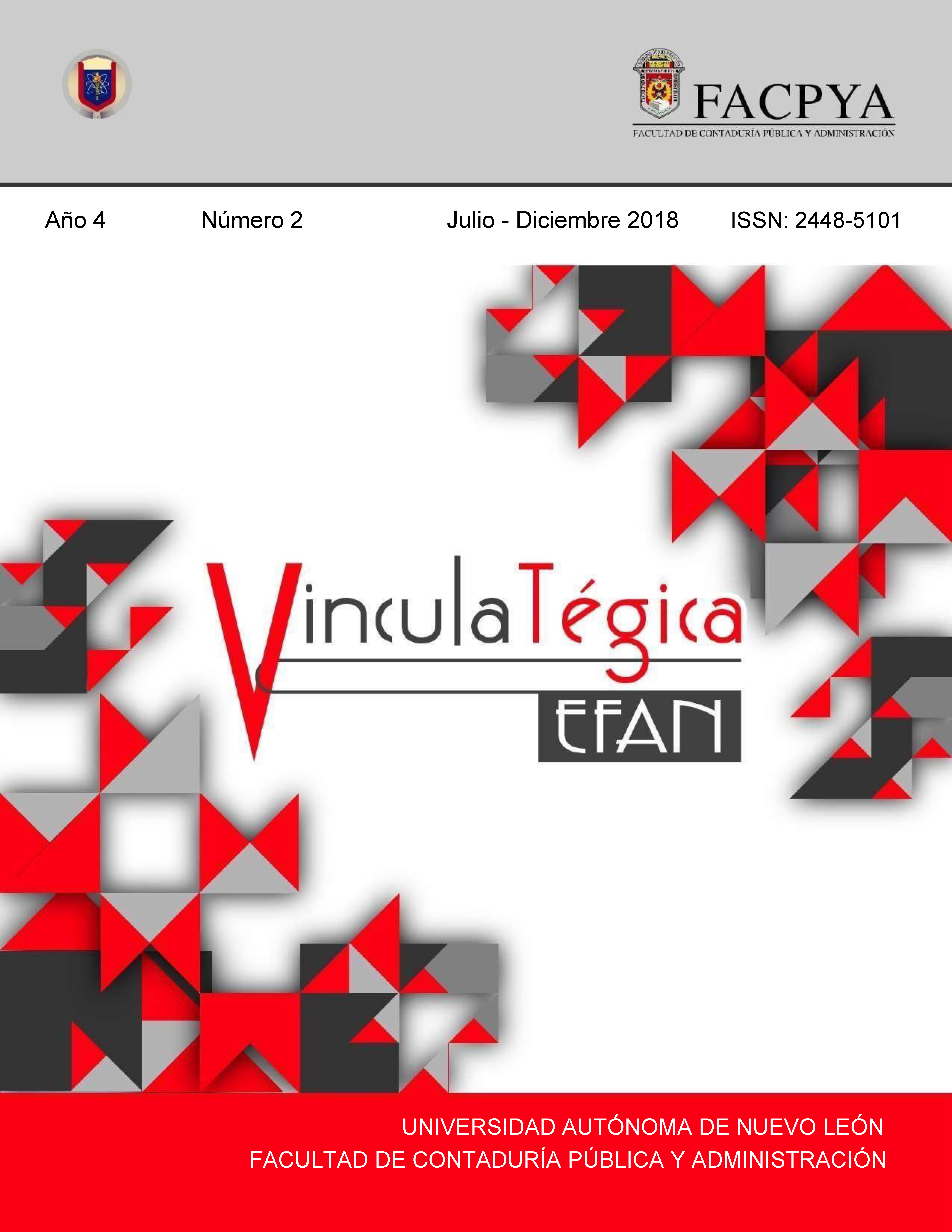Las tres etapas del outsourcing, ¿en cuál etapa se encuentran las empresas mexicanas?
DOI:
https://doi.org/10.29105/vtga4.1-882Keywords:
outsourcing, estrategia, innovación, revisión de literaturaAbstract
Nowadays, it is a great challenge for companies to combine their skills and resources to have a competitive advantage in the market in which they operate. There is a practice that since the early 70s has been used worldwide, known as outsourcing. According to the Cambridge Business Dictionary (2010), it is a strategy in which another company is used to perform particular tasks because it can do them more effectively or cheaply. Outsourcing has evolved over the years, from being a simple tool to reduce costs to be a strategy used by companies to find new ways of doing business and innovate in all aspects. In this article we are going to expose the three stages that outsourcing has gone through and we will support it with a literature review of the last twenty years. In addition, we are going to try to position Mexico in one of the stages mentioned above.
Downloads
References
Bin Jiang, Gregory V. Frazier y Edmund L. Prater (2006). Outsour- cing effects on firms’operational performance. Interna- tional Journal of Operations & Production Management. DOI: https://doi.org/10.1108/01443570610710551
Carlos Sanchís-Pedregosa, María José Palacín-Sánchez y María del Mar González Zamora (2014) Exploring the financial impact of outsourcing services strategy on manufactu- ring firms. Operations Management Research. DOI: https://doi.org/10.1007/s12063-014-0094-9
Cámara Nacional de la industria del Hierro y del Acero (CANA- CERO)
Dean Elmuti (2003). The perceived impact of outsourcing on organizational performance. Journal of Supply Chain Management. DOI: https://doi.org/10.1108/19355181200300010
Deloitte Survey 2014
Diccionario de Negocios de Cambridge
Elango B. (2008). Using outsourcing for strategic competitiveness in small and medium-sized firms. Competitiveness review. DOI: https://doi.org/10.1108/10595420810920806
Francisco Ballina (2015). Ventajas competitivas de la flexibilidad numérica en micro, pequeñas y medianas empresas del Distrito Federal. Revista Problemas del Desarrollo. DOI: https://doi.org/10.1016/j.rpd.2015.10.008
Giuseppe Calabrese y Fabrizio Erbetta (2005). Outsourcing and firm performance: Evidence from italian automotive suppliers. International Journal of Automotive Technology and Management. DOI: https://doi.org/10.1504/IJATM.2005.008585
Holger Görg y Aoife Hanley (2004). Does outsourcing increase profitability? The Economic and Social Review. DOI: https://doi.org/10.2139/ssrn.612228
IMPC (Instituto Mexicano de Contadores Públicos)
ISS, empresa multinacional danesa calificada como mejor empresa de outsourcing (desde el año 2013 hasta el año 2017), por el “Global Outsourcing 100”, publicado por la Asociación Internacional de Profesionales de Outsourcing (IAOP por sus siglas en inglés)
INEGI (Instituto Nacional de Estadística y Geografía)
James Brian Quinn y Frederick G. Hilmer (1994). Strategic out- sourcing. MIT Sloan Management Review.
James Brian Quinn (1999). Strategic Outsourcing: Leveraging Knowledge Capabilities. MIT Sloan Management Review.
James Brian Quinn (2000). Outsourcing Innovation The New Engine of Growth. MIT Sloan Management Review.
Jane C. Linder (2004). Transformational Outsourcing. MIT Sloan Management Review.
K. Matthew Gilley y Abdul Rasheed (2000). Making more by doing less: an analysis of outsourcing and its effects on firm performance. Journal of Management. DOI: https://doi.org/10.1177/014920630002600408
Ley del Impuesto Sobre la Renta
Ley Federal del Trabajo
Manjula S. Salimath, John B. Cullen y U. N. Umesh (2008) Outsourcing and performance in entrepreneurial firms: Contingent relationships with entrepreneurial configu- rations. DOI: https://doi.org/10.1111/j.1540-5915.2008.00196.x
Mary C. Lacity y Leslie P. Willcocks (2013). Outsourcing Business Processes for Innovation. MIT Sloan Management Review.
Masaaki Kotabe y Michael J. Mol (2009). Outsourcing and financial performance: A negative curvillinear effect. Journal or Purchasing and Supply Management. DOI: https://doi.org/10.1016/j.pursup.2009.04.001
Michael R. Weeks y David Feeny (2016) Outsourcing from cost management to innovation. California Management Review.
Nicholas O´Regan y Gerhard Kling (2011). Technology outsour- cing in manufacturing small-and medium-sized firms: Another competitive resource? R&D Management. DOI: https://doi.org/10.1111/j.1467-9310.2010.00626.x
Robert S. Kaplan, Asís Martínez-Jerez y Bjarne Rugelsjøen (2009) Harvard Business Review.
Steven Tadelis (2007) The innovative organization: Creating value trough outsourcing. Harvard Business Review. DOI: https://doi.org/10.2307/41166427
William M. Lankford y Faramarz Parsa. (1999). Outsourcing: a pri- mer. MCB University press. DOI: https://doi.org/10.1108/00251749910269357
Downloads
Published
How to Cite
Issue
Section
License

This work is licensed under a Creative Commons Attribution 4.0 International License.
a). Authors keep copyright and give the journal the right of the first publication of the work under a Creative Commons attribution license. This license allows others to share the work as long as original authorship and initial publication in this journal is acknowledged.
b). Authors may make other independent and additional contractual agreements for the non-exclusive distribution of the version of the article published in this journal (e.g., include it in an institutional repository or publish it in a book) as long as they clearly indicate that the work was published for the first time in this journal.







